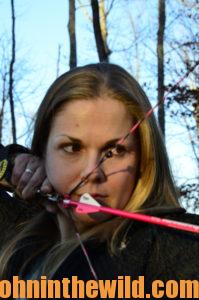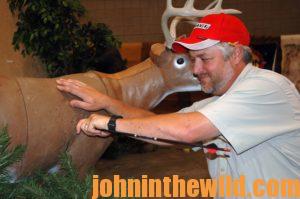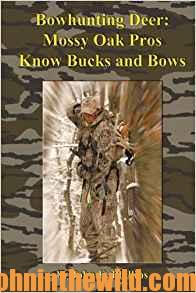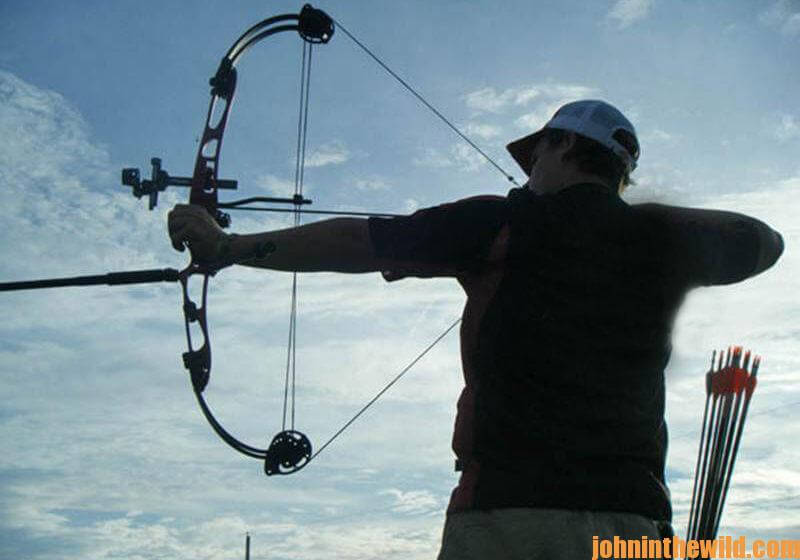Editor’s Note: Rocky Drake of Fayetteville, Tennessee, an avid deer hunter, has evolved throughout the different phases of deer hunting to become a master of the sport of bowhunting deer. He’ll tell us how to prepare for deer season before the season opens.
 When you’re shooting a bow with a lot of draw weight, you have to start getting your muscles in shape earlier than the rest of us who pull less weight. I’m only pulling 65 pounds. Remember that I’ve been shooting a bow for more than 35+ years, and I haven’t hunted with a rifle since 1977. So, for me, getting in the physical and the mental shape to go bowhunting is much like riding a bicycle. Once you learn it, you rarely forget it. I don’t practice shooting a lot before the season. With bow season in Alabama where I primarily hunt starting in the middle of October, I don’t start shooting my bow until about the middle of August, which is when I get serious about my practice. I’ve learned that if I start shooting early in the summer, I get burned-out and bored and start slacking-off just before hunting season, but I want to be shooting my best during hunting season.
When you’re shooting a bow with a lot of draw weight, you have to start getting your muscles in shape earlier than the rest of us who pull less weight. I’m only pulling 65 pounds. Remember that I’ve been shooting a bow for more than 35+ years, and I haven’t hunted with a rifle since 1977. So, for me, getting in the physical and the mental shape to go bowhunting is much like riding a bicycle. Once you learn it, you rarely forget it. I don’t practice shooting a lot before the season. With bow season in Alabama where I primarily hunt starting in the middle of October, I don’t start shooting my bow until about the middle of August, which is when I get serious about my practice. I’ve learned that if I start shooting early in the summer, I get burned-out and bored and start slacking-off just before hunting season, but I want to be shooting my best during hunting season.
Another big advantage I have is that I shoot the same bow year after year. Although I haven’t shot my bow since last deer season, I can pick-up that bow and take it out in the backyard, and it will shoot just like it has last season. If my bow needs tuning, I’ll take it to a pro shop and let the folks there tune it. However, my bow stays in tune. All I have to do is pick-up the bow. Many guys like to tinker with their bows, and tournament archers are always trying to get the maximum performance they can get out of their bows. However, I want to be in the woods hunting. I don’t want to be fiddling with my bow. The past several years, once my bow’s tuned-up, I haven’t done anything to it. When I get a piece of equipment that works, I don’t mess with it.
When I’m practicing, I don’t shoot a dozen arrows at a time. I shoot three arrows, come down, pull those arrows and then shoot with them again, until my form gets sloppy. Then I quit. I’ll probably shoot the bow about 36 times a day. When I’m not hitting the target the way I think I should, I quit. If I don’t quit when I know I’m shooting poorly, I’ll pick-up bad habits.
I don’t increase the number of arrows I shoot each day and don’t stop shooting during the season. When deer season arrives, many deer hunters spend a lot of time hunting and only a small amount of time practicing. That’s a mistake. I continue to shoot as much during the season as I have prior to season. You need to be the most serious about practicing during the season. When you draw that bow back, you don’t need to wonder if you can make the shot. You should know from practice that you can make the shot.
I’m primarily an afternoon hunter, so I take time in the mornings to shoot my bow, to be confident in my shot. I always shoot six to 12 arrows before I climb in my tree stand to hunt. I don’t just take my bow out of the back of my truck and climb into a tree stand. This procedure builds-up my confidence in my ability to make the shot when a buck presents a shot. Also, when I’m practicing, I always shoot out of a tree stand. If I’m hunting in the West, where I’ll have to shoot from a ground blind or off my knees, I’ll practice shooting out to 40-50 yards from a chair or on my knees.
 To learn more about hunting for deer, check out John E. Phillips’ bowhunting books, available in Kindle, “Bowhunting
To learn more about hunting for deer, check out John E. Phillips’ bowhunting books, available in Kindle, “Bowhunting  Deer: Mossy Oak Pros Know Bucks and Bows” (http://amzn.to/1QGvdQx) and “Bowhunting Deer: The Secrets of the PSE Pros” (http://amzn.to/VBr1qW), or copy and paste these clicks into your browser.
Deer: Mossy Oak Pros Know Bucks and Bows” (http://amzn.to/1QGvdQx) and “Bowhunting Deer: The Secrets of the PSE Pros” (http://amzn.to/VBr1qW), or copy and paste these clicks into your browser.
Tomorrow: Working with Young Bowhunters to Learn to Take Deer










